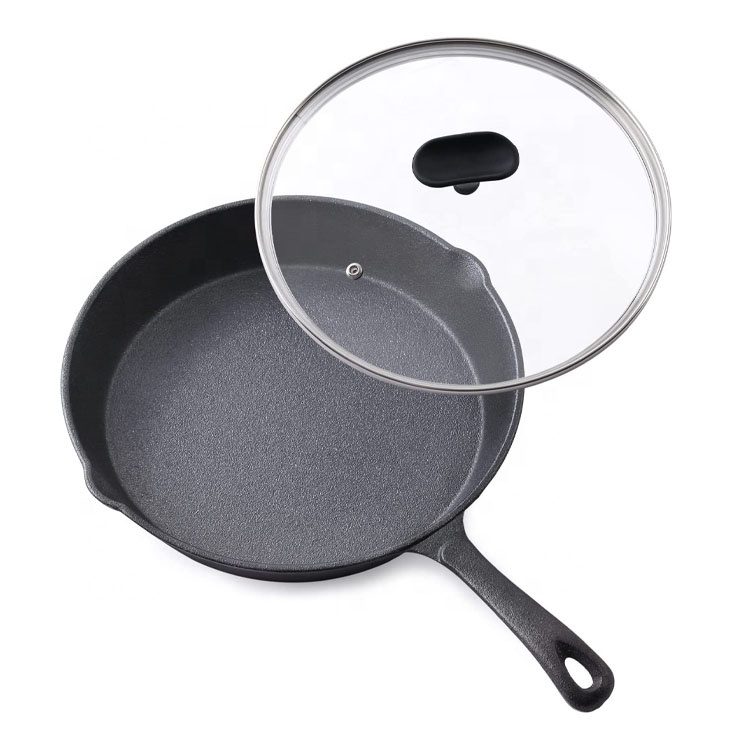
Effective Methods for Restoring a Cast Iron Skillet to Its Former Glory
Fixing Your Cast Iron Skillet A Comprehensive Guide
Cast iron skillets are beloved by cooks for their durability and ability to retain heat, making them ideal for frying, baking, and simmering a variety of dishes. However, with time and use, they can develop rust, lose their non-stick surface, or even get damaged. Fortunately, fixing a cast iron skillet is not only possible but also quite straightforward if you know the right techniques. In this guide, we will explore methods for restoring your cast iron skillet to its former glory.
Understanding the Signs of Damage
Before diving into repairs, it’s essential to identify the specific issues your skillet may have. Common problems include
1. Rust Typically appearing as reddish-brown spots, rust develops when moisture is left on the skillet or when it is not seasoned properly. 2. Sticking Food Over time, the non-stick surface may degrade, causing food to stick during cooking. 3. Cracks or Chips These can occur due to thermal shock, such as adding a cold liquid to a hot skillet or dropping it.
Steps to Restore Your Cast Iron Skillet
Step 1 Clean the Skillet
For any issue, the first step is to clean the skillet thoroughly. Use a stiff brush or a fine steel wool pad to scrub off any rust or food residue. For stubborn rust, you can soak the skillet in a vinegar solution (equal parts vinegar and water) for up to an hour, but be cautious not to leave it too long, as vinegar can damage the iron.
After scrubbing, wash the skillet with warm water and mild soap (this is the rare occasion when soap is acceptable; many cooks prefer to avoid soap regularly). Rinse thoroughly and dry immediately with a cloth or paper towel. To further prevent rust, place it on a low heat for a few minutes to ensure all moisture has evaporated.
Step 2 Seasoning the Skillet
fixing cast iron skillet

Once your skillet is clean and dry, it's time to re-season it. Seasoning is crucial as it creates a non-stick surface and protects the iron from rust.
1. Choose the Right Oil Use oils with high smoke points, such as flaxseed oil, grapeseed oil, or vegetable oil. 2. Apply Oil Pour a small amount of oil into the skillet and use a paper towel to spread it evenly across the entire surface, including the handle and the outside. 3. Bake the Skillet Preheat your oven to 450°F (232°C). Place the skillet upside down on the top rack and put a baking sheet underneath to catch any drips. Bake for one hour, then turn off the heat and let the skillet cool in the oven.
Step 3 Addressing Cracks and Chips
If your skillet has a crack or chip, the repair process is a bit more complicated. Small chips can often be managed by re-seasoning, as this will fill in the gaps and help prevent further damage. For deeper cracks, however, you may need to consider professional repair or replacement, as severe damage can compromise the integrity and safety of the skillet.
Preventative Care
To keep your cast iron skillet in top condition, follow these preventative care tips
- Avoid Dishwashers Never place your skillet in the dishwasher; instead, hand wash it immediately after use. - Prevent Moisture Always dry your skillet thoroughly after washing and apply a thin layer of oil before storing. - Store Properly Place a paper towel between the skillet and its lid or other cookware to absorb moisture and prevent scratching.
Conclusion
A well-maintained cast iron skillet can last a lifetime, and with a little care, you can restore even the most worn ones. By understanding the common issues and applying these restoration techniques, you can continue to enjoy cooking with your cast iron skillet for years to come. Remember, the more you use and care for it, the better it performs, becoming a treasured tool in your kitchen. Happy cooking!
-
Premium Red Cast Iron Cookware Set Durable & Even Heating Kitchen EssentialNewsApr.29,2025
-
Premium Enameled Bakeware Nonstick, Durable & Versatile DesignsNewsApr.29,2025
-
Heavy-Duty Cast Iron Flat Griddle – Even Heating & Versatile UseNewsApr.28,2025
-
Camp Oven 12 Quart - Durable Cast Iron, Portable Outdoor Cooking SolutionNewsApr.28,2025
-
Durable Cast Iron Stand for Pots Protect Countertops & OrganizeNewsApr.28,2025
-
Double-Sided Cast Iron Grill Pan Dual-Surface Indoor/Outdoor CookwareNewsApr.27,2025


